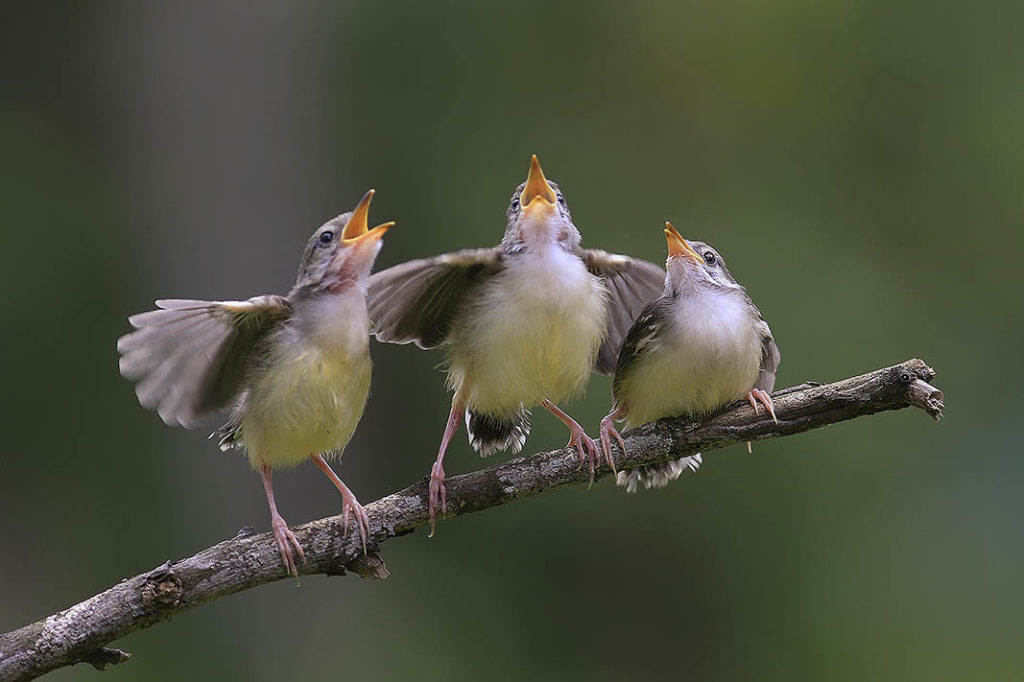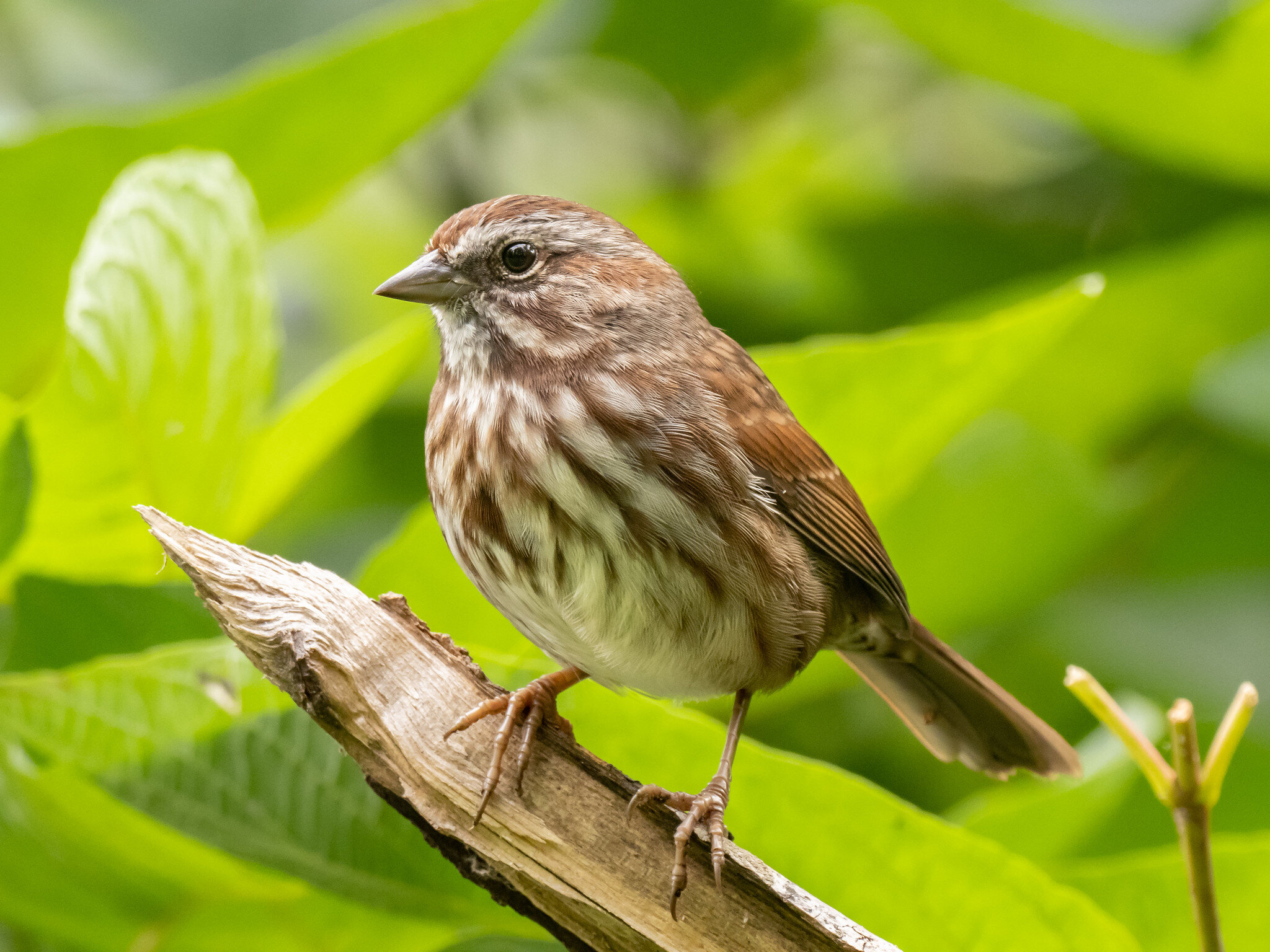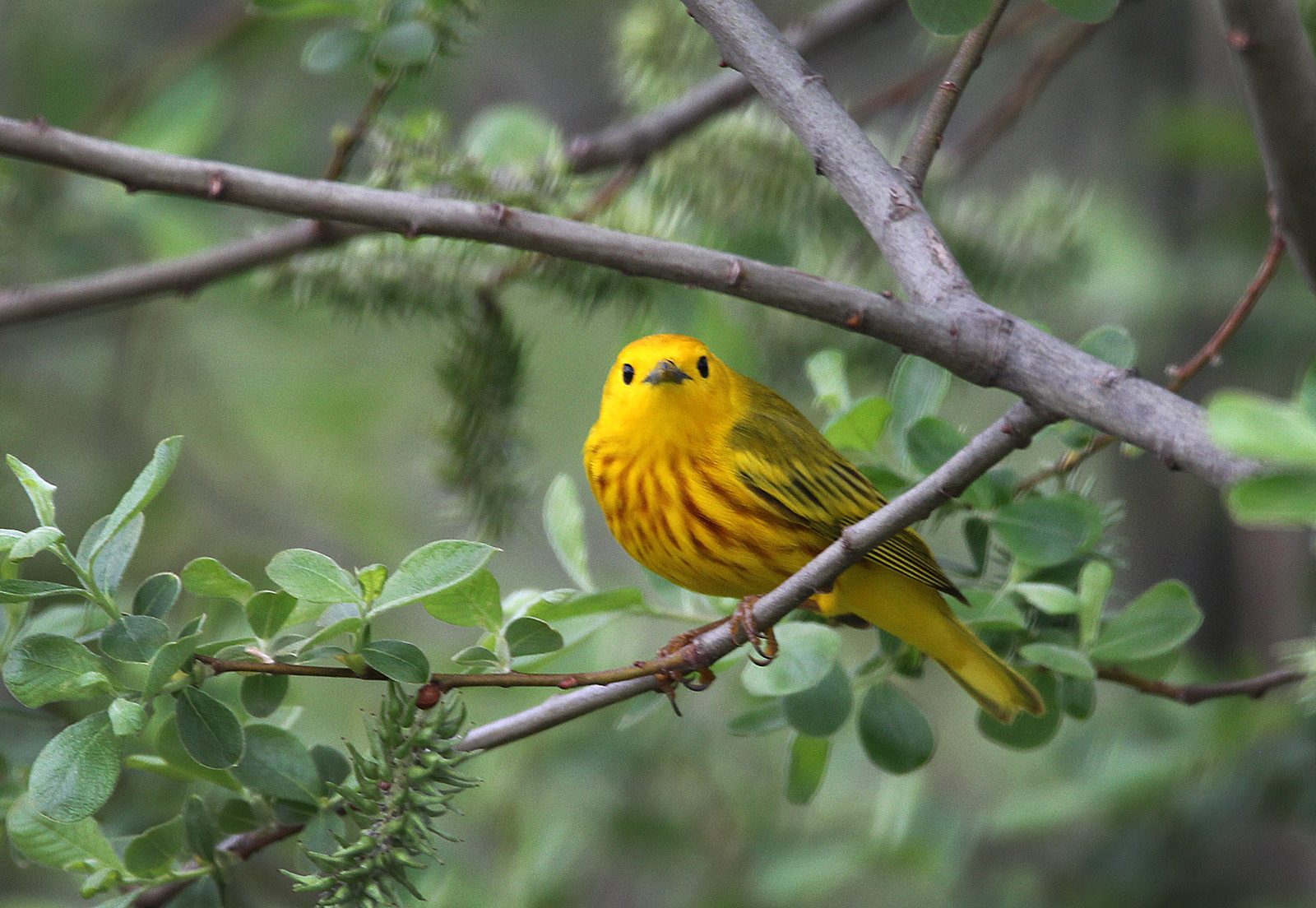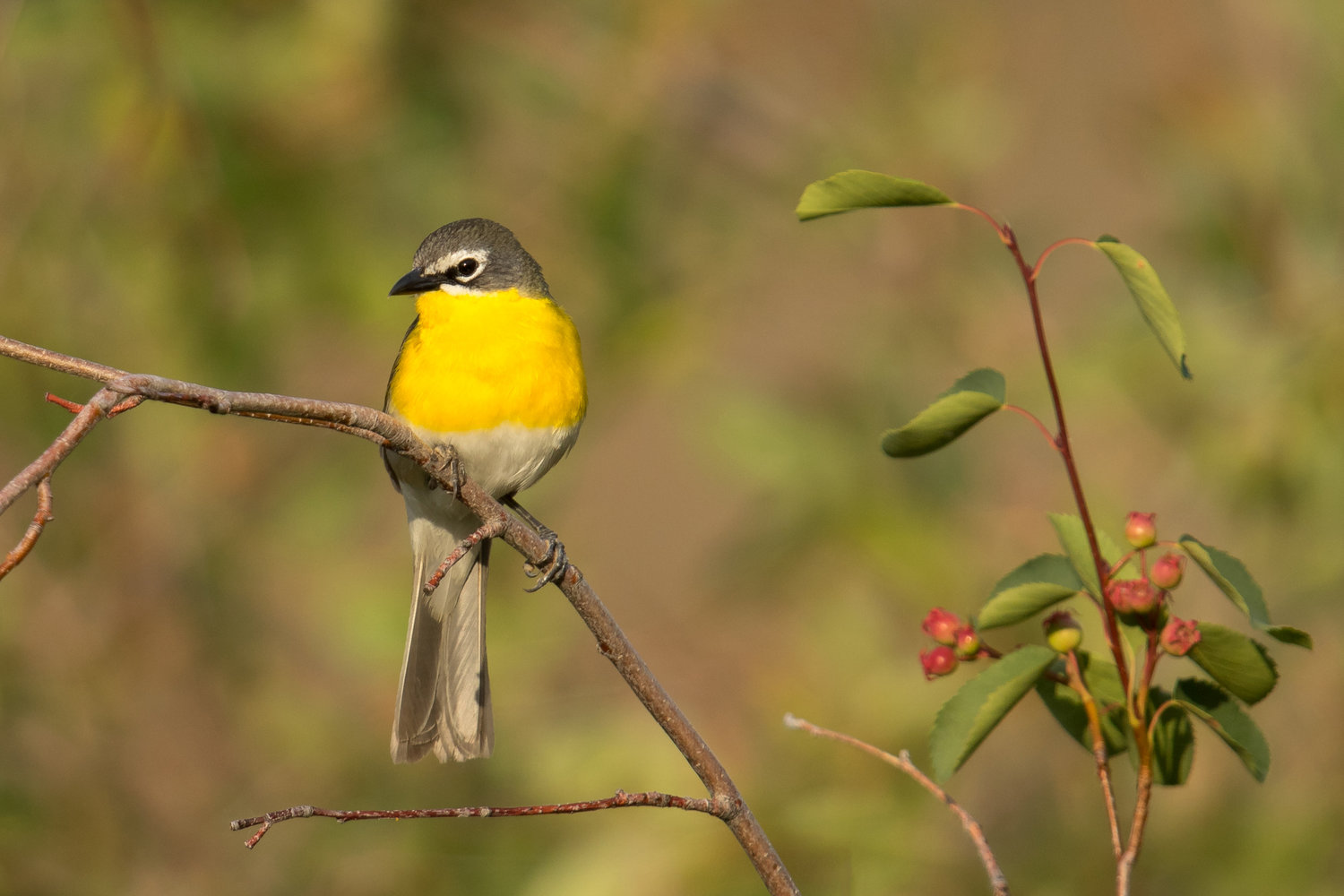Birds are known for their beautiful plumage and lively personalities, but their sweet songs are what make them truly special. Songbirds sing unique and complex tunes for several reasons, including to attract a mate, defend their territory, or strengthen their pair bond. The sounds that birds produce are not only melodious to the human ear but also serve as a means of social communication.
In this article, we will explore 10 types of singing birds, including both wild and pet birds, complete with pictures, detailed descriptions, and their songs, timing, and habitats.
You are reading: 10 Types Of Singing Birds

10 Types Of Singing Birds
Song Sparrow

The Song Sparrow is a small finch that is known for its beautiful and unique song. This bird produces short, well-spaced notes that end with varying trills or buzzes. The song may not sound the same each time as it varies by singer. They are most common around dawn in the spring, but it is not uncommon to hear them on cold winter mornings.
The Song Sparrow has rosy, red faces, and breasts with streaky brown backs. They have conical bills and notched tails. This species is a common flocking bird at feeders and particularly enjoys black oil sunflower seeds. The Song Sparrow is found in thickets, brush, marshes, roadsides, gardens, and varies over its wide range.
In most areas, it is found in brushy fields, streamsides, shrubby marsh edges, woodland edges, hedgerows, and well-vegetated gardens. Some coastal populations live in salt marshes.
The Song Sparrow nests in dense streamside brush in southwestern deserts and in any kind of dense low cover on Aleutian Islands, Alaska. The nest is an open cup of weeds, grass, leaves, strips of bark, lined with fine grass, rootlets, and animal hair.
The Song Sparrow is present all year in many parts of its range, but birds from the northern interior move south to southern United States or extreme northern Mexico in winter.
Yellow Warbler

The Yellow Warbler is a small, brightly colored songbird that is widely distributed across North America. In summer, the males sing a sweet, whistled song from willows, wet thickets, and roadsides.
The females and immatures aren’t as bright, and lack the male’s rich chestnut streaking, but their overall warm yellow tones, unmarked faces, and prominent black eyes help pick them out. They are not vulnerable to loss of habitat as some warblers because they favor second growth and edges.
The Yellow Warbler is a long-distance migrant, and their breeding ground is distributed all across North America and a large part of Central America. They migrate north each spring to nest in temperate, young forests and shrublands from the Arctic Circle to Mexico.
When autumn approaches, they fly south to Central and South America, where they primarily winter in mangrove forests. The male Yellow Warbler perches high in tall shrubs or small trees and whistles a “sweet, sweet, sweet, I’m so sweet” sounding song that can be repeated up to ten times a minute.
The female builds the nest, which is made from grasses, bark, and nettles, and is covered on the exterior with spiderwebs and plant fibers. The interior is lined with feathers, animal fur, and flowering plant fibers, like cottonwood and dandelion.
Read more : Discover 10 Types Of Birds In The World
The Yellow Warbler eats mostly insects, with caterpillars and other insect larvae making up a large part of their diet. They forge at the tops of shrubs and small trees, where they dart quickly among the branches in search of their prey.
Yellow-Breasted Chat

The Yellow-Breasted Chat is a large songbird found in North America and is the only member of the family Icteriidae. It was once considered a member of the New World warbler family, but in 2017, the American Ornithological Society moved it to its own family.
The Yellow-Breasted Chat is found throughout North America, breeding from the southern plains of Canada to central Mexico, and mainly migrates to Mexico and Central America for the winter, although some may overwinter in coastal areas farther north.
This species occurs in areas where dense shrubbery is common, and its habitat often consists of abandoned farmland and other rural areas where overgrown vegetation proliferates.
The Yellow-Breasted Chat is larger and bulkier than warblers or vireos, with a long tail, large head, and a relatively thick, heavy bill. They have olive-green upper parts with white bellies and bright-yellow throats and breasts. Other signature features of Yellow-Breasted Chats are their large, white eye rings, and blackish legs.
The Yellow-Breasted Chat is a shy, skulking species of bird, often being heard but not seen. The breeding habitats of this species are dense, brushy areas and hedgerows. The nests of these birds are bulky cups made of grasses, leaves, strips of bark, and stems of weeds, and lined with finer grasses, wiry plant stems, pine needles, and sometimes roots and hair.
Nests are invariably placed in thick shrubs and often only about 2.5 m (8.2 ft) above the ground. Yellow-Breasted Chats are gleaning insects and berries for food, and they are seldom seen or heard during the rest of the year, when both males and females skulk silently in the shadows of dense thickets.
Wood Thrush
The Wood Thrush is a medium-sized songbird that is widely distributed across North America. It is the only species placed in the genus Hylocichla and is closely related to other thrushes such as the American robin.
The Wood Thrush has brown upper parts with mottled brown and white underparts, and the male and female are similar in appearance. The male’s song is often cited as being the most beautiful in North America, with a loud, flute-clear “ee-oh-lay” that rings through the deciduous forests of the eastern U.S. in summer.
American naturalist Henry David Thoreau wrote, “Whenever a man hears it he is young, and Nature is in her spring; wherever he hears it, it is a new world and a free country, and the gates of Heaven are not shut against him”.
The Wood Thrush has become a symbol of the decline of Neotropical songbirds of eastern North America, having declined by approximately 50% since 1966. Forest fragmentation in North American forests has resulted in both increased nest predation and increased cowbird parasitism, significantly reducing their reproductive success.
Hermit Thrush
The Hermit Thrush is a medium-sized North American thrush that is known for its beautiful and haunting song. Here are some interesting facts about this singing bird:
– The Hermit Thrush is not very closely related to the other North American migrant species of Catharus, but rather to the Mexican russet nightingale-thrush.
– The specific name guttatus is Latin for “spotted,” referring to the bird’s plumage.
– The Hermit Thrush’s song has been described as “the finest sound in nature” and is ethereal and flute-like, consisting of a beginning note, then several descending musical phrases in a minor key, repeated at different pitches. It often sings from a high open location.
– Analysis of the notes of its song indicates that they are related by harmonic simple integer pitch ratios, like many kinds of human music and unlike the songs of other birds that have been similarly examined.
– The Hermit Thrush is the state bird of Vermont and has been featured in several poems and literary works, including Walt Whitman’s elegy for Abraham Lincoln, “When Lilacs Last in the Dooryard Bloom’d,” and Amy Clampitt’s poem “A Hermit Thrush.”
– Former Canadian indie-rock band Thrush Hermit took their name from a reversal of the bird’s name. It is also shared by the American bands Hermit Thrushes and Hermit Thrush.
– The Hermit Thrush’s beautiful, haunting song begins with a sustained whistle and ends with softer, echo-like tones, described as “oh, holy holy, ah, purity.”
– The Hermit Thrush prefers to be hidden deep in the forest, and its song can be heard in the early morning and late afternoon.
Western Meadowlark

The Western Meadowlark is a medium-sized icterid bird that is about 8.5 inches in length. Here are some interesting facts about this singing bird:
Description:
– Western Meadowlark adults have yellow underparts with a black “V” on the breast and white flanks streaked with black.
– Their upper parts are mostly brown, but also have black streaks.
– These birds have long, pointed bills and their heads are striped with light brown and black bands.
– The Western Meadowlark is the size of a robin but chunkier and shorter-tailed, with a flat head, long, slender bill, and a round-shouldered posture that nearly conceals its neck.
– The wings are rounded.
Habitat:
– The Western Meadowlark nests on the ground in open grasslands across western and central North America.
– The breeding habitats of Western Meadowlarks are grasslands, prairies, pastures, and abandoned fields, all of which may be found across western and central North America, as far south as northern Mexico.
– In regions where their range overlaps with the eastern species, these birds prefer thinner, drier vegetation.
– In winter, they are often found in stubble fields and other farmland.
Diet:
– The Western Meadowlark feeds mostly on bugs, but will also feed on seeds and berries.
– They may come to backyards if food is offered, although they are not seen regularly at feeders.
– Although they do eat grain, Western Meadowlarks also help limit numbers of crop-damaging insects.
Other interesting facts:
– The Western Meadowlark has distinctive calls described as watery or flute-like, which distinguish it from the closely related Eastern Meadowlark.
– The Western Meadowlark is the state bird of six states: Kansas, Montana, Nebraska, North Dakota, Oregon, and Wyoming.
– The nest of the Western Meadowlark usually is partially covered by a grass roof. It may be completely open, however, or it may have a complete roof and an entrance tunnel several feet long.
– Although the Western Meadowlark looks nearly identical to the Eastern Meadowlark, the two species hybridize only very rarely.
Gray Catbird
Read more : Cardinals Big Bird Bath Users
The Gray Catbird is a medium-sized North American and Central American perching bird of the mimid family. It is the only member of the “catbird” genus Dumetella. Here are some interesting facts about this singing bird:
Description:
– The Gray Catbird has a plain, slate-gray body with a small black cap and a rich rufous-brown patch under the tail.
– They have a slender body, long rounded black tail, and a narrow, straight bill.
– They are robin-sized and have broad, rounded wings.
Habitat:
– Gray Catbirds are found in undergrowth, brush, thorn scrub, suburban gardens, and other dense, shrubby habitats.
– They are common in eastern North America, but their range extends from southern Canada to the Gulf of Mexico and from the Atlantic coast to the Great Plains.
– They are migratory birds and spend winters in the southeastern United States, Mexico, Central America, and the Caribbean.
Diet:
– The Gray Catbird feeds on insects, fruits, and berries.
– They are known to mimic other bird species and string together their sounds to create their own song.
Other interesting facts:
– The Gray Catbird is known for its distinctive mewing call, which is often heard in thickets and vine tangles.
– They are monogamous and form long-term pair bonds.
– The female Gray Catbird builds a large, deep nest in thick underbrush or shrubs, and both parents feed the nestlings until they are ready to leave the nest.
– Gray Catbirds are sometimes parasitized by Brown-headed Cowbirds, but they are able to distinguish their own eggs from those of the cowbirds and will destroy any eggs that look different.
American Robin
The American Robin is a migratory bird of the true thrush genus and Turdidae, the wider thrush family. It is the most abundant landbird in North America, with 370 million individuals, according to the Partners in Flight database (2019).
The American Robin has seven subspecies, and its male has a complex and almost continuous song, which is commonly described as a cheery carol, made up of discrete units, often repeated, and spliced together into a string with brief pauses in between.
The song varies regionally, and its style varies by the time of day. The song period is from late February or early March to late July or early August, and some birds, particularly in the east, sing occasionally into September or later.
The American Robin also sings when storms approach and again when storms have passed. In addition to its song, the species has a number of calls used for communicating specific information, such as when a ground predator approaches and when a nest or another American Robin is being directly threatened.
The American Robin is also the state bird of six states: Kansas, Montana, Nebraska, North Dakota, Oregon, and Wyoming.
Baltimore Oriole
The Baltimore Oriole is a small icterid blackbird that is common in eastern North America as a migratory breeding bird. Here are some interesting facts about this singing bird:
Description:
– The male Baltimore Oriole has bright orange underparts, black wings, and a black head with an orange crown.
– The female is duller, with a yellowish-orange breast and grayish-brown wings and back.
– Both sexes have a long, pointed bill and white wing bars.
Habitat:
– Baltimore Orioles breed in open woodlands, forest edges, and shade trees.
– They migrate to Central America and northern South America for the winter.
Diet:
– Baltimore Orioles feed on insects, fruit, and nectar.
– They are known to visit hummingbird feeders for nectar.
Song:
– The male Baltimore Oriole has a beautiful, flutelike song that is rich and full-toned.
– The male sings to establish and defend a breeding territory, so you won’t hear the full song on the wintering grounds.
– The female also sings, but her song is less complex and is used primarily to communicate with her mate.
Other interesting facts:
– The Baltimore Oriole is the state bird of Maryland.
– The Baltimore Orioles baseball team is named after this bird.
– The Baltimore Oriole was originally classified as a separate species from the western Bullock’s Oriole, but research has shown that the two birds do not interbreed significantly.
Common Nightingale

The Common Nightingale, also known as the Rufous Nightingale, is a small passerine bird that is best known for its powerful and beautiful song. Here are some interesting facts about this singing bird:
– The Common Nightingale is so named because it frequently sings at night as well as during the day. The name has been used for more than 1,000 years, being highly recognizable even in its Old English form “nihtegale,” which means “night songstress.”
– Early writers assumed the female sang when it is, in fact, the male that sings. The song is loud, with an impressive range of whistles, trills, and gurgles. Its song is particularly noticeable at night because few other birds are singing.
– The Common Nightingale has also been used as a symbol of poets or their poetry. Poets chose the nightingale as a symbol because of its creative and seemingly spontaneous song. Aristophanes’s “The Birds” and Callimachus both evoke the bird’s song as a form of poetry. Virgil compares the mourning of Orpheus to the “lament of the nightingale.” In Sonnet 102, Shakespeare compares his love poetry to the song of the Common Nightingale (Philomel).
– The Common Nightingale is the national bird of Ukraine. One legend tells how nightingales once only lived in India when one nightingale visited Ukraine. Hearing sad songs from the people, the nightingale sang its song to cheer them up. The people responded with happy songs, and since then, nightingales have visited Ukraine every spring to hear Ukrainian songs. National poet Taras Shevchenko observed that “even the memory of the nightingale’s song makes man happy.”
– The Common Nightingale is found in Europe, Asia, and Africa. It breeds in Europe and western Asia and migrates to sub-Saharan Africa in the winter.
– The Common Nightingale’s diet consists of insects, spiders, and other small invertebrates.
– The Common Nightingale’s song has been described as one of the most beautiful sounds in nature. There are several videos available on YouTube that showcase the bird’s song, including a one-hour compilation of nightingale singing.
FAQS
1. What is the most beautiful bird song?
The most beautiful bird song is subjective and varies from person to person. However, the American Robin, Wood Thrush, and Common Nightingale are often cited as having beautiful songs.
2. Do female birds sing?
Yes, female birds do sing, although they may sing less often than males. For example, female Orchard Orioles sing a structurally different and quieter song than males.
3. What is the state bird of Maryland?
The state bird of Maryland is the Baltimore Oriole. It is also the namesake and mascot for the Baltimore Orioles baseball team.
4. What is the song of the Baltimore Oriole?
The song of the Baltimore Oriole is a rich, whistling sound that is often heard in treetops near homes and parks. It is a sweet herald of spring in eastern North America.
5. What is the diet of Baltimore Orioles?
Baltimore Orioles feed on insects, fruit, and nectar. They are known to visit hummingbird feeders for nectar.
6. What is the most common landbird in North America?
The American Robin is the most abundant landbird in North America, with 370 million individuals, according to the Partners in Flight database (2019).
7. What is the national bird of Ukraine?
The national bird of Ukraine is the Common Nightingale.
Source: https://petstutorial.com
Category: Birds










